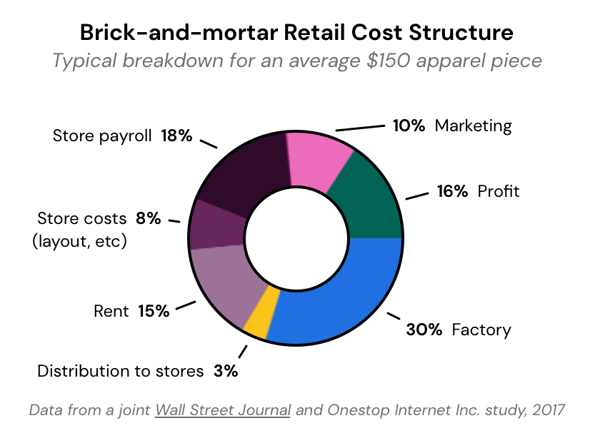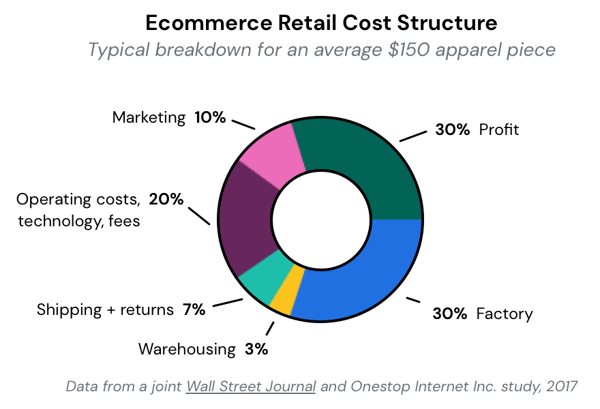Want a Path to Profitability? Focus on Your Supply Chain

DTC and ecommerce companies can dramatically improve their businesses by understanding how their supply chains impact customer experiences in a way that determines winners and losers.
The insight is coming from an experienced and empathetic point of view.
Shipium consists of ecommerce veterans: I’m a 19-year veteran and former executive of Amazon, responsible for building out the systems that power Prime and Subscribe & Save, among other things. My co-founder and CTO Mac Brown started the same year at Amazon before moving to Zulily and building out the fulfillment stack which powered the fastest growing ecommerce company of all time during his tenure. Combined, we are responsible for the supply chain tech stack that powers two of the largest ecommerce companies in the United States. The unifying experience: Ecommerce business models win when they focus on the customer.
That includes the physical means by which customers are serviced—i.e., the supply chain.
Take whatever you know about supply chains and throw it out
In the 1990s supply chains were viewed as a cost center. A money sink meant to be optimized to the extreme. Squeeze as much blood from the rock as possible.
To be fair, a focus on optimizing efficiency made sense at the time.
The cost structures of physical retail are quite different. "Logistics" was the means by which product was delivered to stores. Other than availability on the shelf, there wasn't much thought to supply chains impacting customer satisfaction.

That attitude has somewhat carried over to early ecommerce business models. But that attitude isn’t just dead wrong, it's a fatal flaw, a philosophy that will kill an ecommerce business.
The reason why is simple: Both the cost structures and points of customer interaction are entirely different.

These inherent differences require retailers to radically rewire how they piece together their organizational strategy. Operations investments are now intimately intertwined with marketing outcomes.
Your supply chain is your customer experience
Smart ecommerce companies understand that the supply chain is partially or completely responsible for almost every customer interaction touchpoint you own along their buying journey.

Once a customer reaches your channel, digital CX outcomes are determined by physical operations.
- Availability: Are the products customers want in-stock when they view the product detail page?
- Delivery promise: Customers want to know when they can get the product. Studies show displaying an accurate delivery date on the product detail page will increase cart conversion as high as 12%.
- Delivery options: Some customers want free shipping, some want fast shipping. Very few expect free and fast, but almost everyone wants one option or the other, otherwise they will bounce. Are you providing both at the time of checkout?
- Post-order transparency: Customers expect accurate shipping statuses. Plus, improvement over the years has shifted preferences to wanting fewer hoops and clicks to get to that information.
- Unboxing: The experience of unboxing your product can be a critical objective for marketing. Yet their success is out of their control as packaging is dependent upon the fulfillment processes set in place up stream by operations.
- Returns: A real margin eater if done improperly, but customers expect free and easy return policies. Therefore it is incumbent upon operations to figure out an inexpensive way to offer free returns.
The path to profitability
It doesn't matter how you make money, a stronger supply chain is your path to stronger margins.
There are generally two ways to make money in ecommerce.
The first way is sell high-priced goods where you are profitable on the first sale. By nature of being a high-priced item, customers typically make a single purchase (mattresses, cars, bikes, appliances). You may get repeat purchases on an elongated time horizon, but it's safe to project most products are purchased at most once a year.
In this model, it all comes down to improving margin on the first sale. Marketing plays a role optimizing customer acquisition costs, but supply chain managers play an equally vital role ensuring operational costs such as outbound shipping or reverse logistics don't eat at profitability.
The second way is the opposite, where you sell the first product at or near a loss in order to gain repeat purchases over time that eventually lead to profitability. Subscriptions are usually found here, which is why so many DTC brands finding success today are in categories like haircare, health and wellness, food, etc. Resellers and marketplaces not focused on high-priced goods also look to build long-term loyalty.
In this model, the supply chain's impact on profitability is even more pronounced because marginal opex savings have an amplifying impact on the bottom line. A 1% reduction in outbound shipping can lead to millions in found money.
Overall, few companies are the first model by nature of how few high-priced and high-margin product categories there are. In reality, most DTC companies are targeting the second model where repeat purchases and customer loyalty, sometimes via subscriptions but not always, are critical to the business's success.
In that case, Life-Time Value (LTV) is the most important metric to most DTC and ecommerce companies. A poor LTV value will sink the business.
The big idea: Your supply chain directly impacts higher LTV scores
It's a simple formula.
More than 80% of ecommerce companies believe their main axis of competition is customer experience. With consumers having so many options nowadays, this is more true than ever.
A better customer experience is also the number one way to create repeat buyers or higher LTV.
The supply chain impacts most customer experience touch points which you control.
Therefore investments and innovations in the supply chain directly translate to more customers at a higher LTV.
What do we mean by supply chain investments and innovation?
It's best to look at the linear flow of goods that power your business, then assign which customer experience metrics are impacted at each stage. This view will give you a game plan.

Sourcing is about ensuring the right products are available for customers. That means working with vendors who meet your criteria, such as sustainable manufacturing methods or certain types of materials. LTV is dramatically impacted by the quality of your product after use. A poor customer experience with the product—it broke after a single use!—will kill a relationship. Operations is partially responsible for ensuring sourcing is not a failure point.
Inbound logistics are about availability of products. Marketing may have hit the jackpot with a viral video, but what happens when the product isn't available? Operations is responsible for both speed and precision here. Inbound bottlenecks preventing availability aren't good; neither is sending product to the wrong fulfillment center.
Fulfillment is about the speed and quality of packing purchased goods for delivery. There are dozens of optimization techniques that are all the responsibility of operations. But if the FC takes 2 days to pick-and-pack an order, then you can kiss goodbye a fast shipping option at a reasonable cost.
Outbound is about speed and cost. You must provide at minimum either a fast shipping option or free shipping option. Both can be margin eaters if not properly managed. Similarly, there are dozens of innovations you can do, so what's an example? A simple one is algorithmic selection of an outbound shipping carrier from a specific FC which optimizes for the cheapest possible cost as the fastest possible time.
Returns are about convenience and cost. Customer expect you provide a free and easy way for customers to return product, so operations must figure out ways to support the requirement in the cheapest and most convenient way possible.
In addition, things like a delivery promise is a customer-centric innovation that is the responsibility of operations. Displaying back to customers in real-time an estimated delivery date when viewing a product is non-trivial yet meaningful to the bottom line.
Case study: click-to-deliver
Here is a simple example I witnessed while I was at Amazon.
In a typical supply chain environment, metrics are internally focused. A company might track "time-to-ship" which is defined as how long it takes to pick-and-pack an order before handing off to the outbound carrier.
In Amazon’s customer centric culture we quickly recognized this metric is meaningless to the consumer. He or she could care less about your FC processes. What customers care about is that they will get what they just bought. Therefore "time-to-ship" is less useful on its own, but rather part of a composite metric called "click-to-deliver" which measures how long it takes until customers get what they ordered.

Amazon then mobilized the entire operations team to focus on improving this metric. This subtle shift led to a "customer-obsessed" operations culture.
The result? Faster and faster delivery options based on continual innovation along each step of the composite metric.
But what's really cool is how the innovations opened up an ability for marketing to then "merchandise" those improvements back to the customer. As Amazon got better at offering 2-day shipping to more consumers, they built a way to merchandise that speed in real-time back to product pages. The visibility of a fast delivery promise led to more customers was one of many innovations which led to more revenue which led to more investments in innovation and cost savings, which kickstarted a flywheel.
We aren't saying you need to be Amazon. But we are saying that the principles around leveraging your supply chain to improve customer experience and thus your business model are something you should adopt.
The good news is it's totally possible for any company to deliver a Prime-like experience.

Jason is co-founder and CEO of Shipium where he guides the company's vision towards becoming the world’s best supply chain technology platform for ecommerce and retail. Prior to founding Shipium, he spent 19 years at Amazon as VP of Retail Systems and VP of Forecasting & Supply Chain. While there he owned the global software and operations group that powered Prime, Subscribe & Save and Pricing. He is a University of Washington grad and an engineer at heart who loves solving complex scaling problems.


